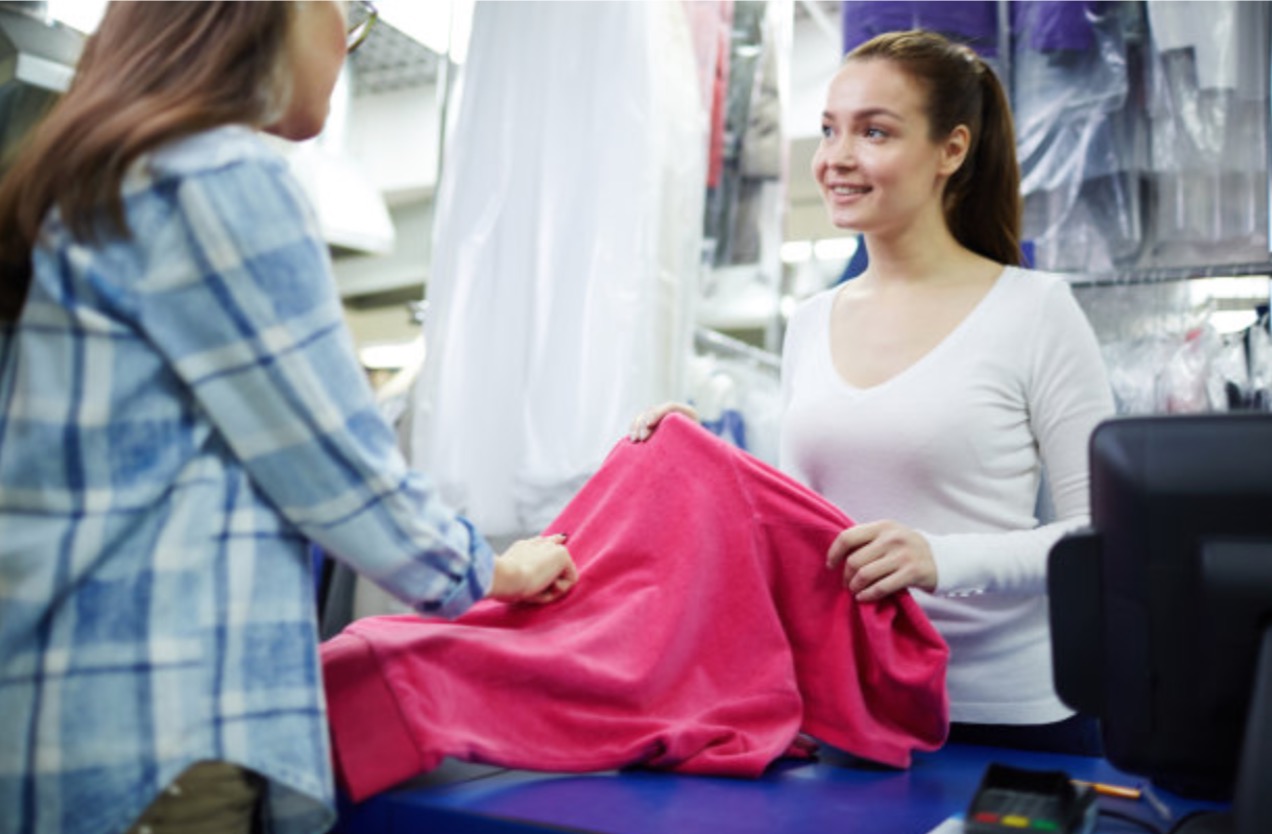After dry cleaning, some clothes do not look as bright as before, although there is no graying caused by re-precipitation.
Textile manufacturers generally increase the brightness of fabrics by adding brighteners, also known as fluorescent agents. It is coated on the surface of fabric fibers like a colorless paint, and will shine when exposed to ultraviolet light. Ultraviolet light is part of the sun, invisible to the naked eye. When UV light hits the fluorescent agent, it produces a bright color visible to the naked eye, which makes the fabric fibers appear newer and brighter than before.
There are many laundry detergents and some dry-cleaning liquids (soap oil) that contain a certain amount of fluorescent powder themselves, which makes the washed clothes brighter and more vivid in color. Phosphors work better on natural fibers (cotton, wool, silk) than on man-made fibers (nylon, polyester).
Many fluorescent agents will dissolve when dry cleaning in perchloroethylene, even though these garments are labeled "dry cleanable." This situation is unforeseeable by dry cleaners and cannot be prevented. This responsibility rests with the textile manufacturer. However, the situation can generally be improved by rewashing in a phosphor-containing soap solution.

Precautions before dry cleaning
1. Laundry workers should carefully check the clothes to see if they are suitable for dry cleaning, whether there are fading, damage, dyeing, special accessories, special stains and items. Workers should check the receipts with the salesperson in time to see if there are any records on the receipts. If there is no record, the salesperson needs to communicate with the customer and ask the customer to sign and approve.
2. Clothes should be classified by color. The order is light color first, dark color later.
3. Select the washing level and washing time according to the degree of stains and thickness of the clothes (if the clothes are dirty and thick, choose a low-level pre-wash. Otherwise, choose a high-level).
4. Dry cleaners need to check whether there are polluting and dangerous substances in the clothes, such as lipstick, pens, ballpoint pens, dyed items, flammable items (lighters), sharp and hard items (blades), etc. These things can contaminate the same batch of laundry and unsafe hazards during the dry cleaning process.
5. Clothes are marked with stains should be pre-treated. According to the type of stains, select the corresponding stain remover for pre-treatment.
6. Dry-cleaning light-colored clothes should use distilled cleaning solvent and add soap oil. At the same time, ensure the pipes of the dry-cleaning machine are clean.
7. When closing the door, be careful and avoid the door catch the clothes.
8. In principle, the rated loading capacity of all dry cleaning machines shall not be lower than 70% and not higher than 90%. Over-loading and under-loading are not conducive to the cleanliness of clothing.
9. Special circumstances handling methods.

(1) Remove the buttons on the clothes that are not suitable for dry cleaning and are easy to fall off. Metal buttons and accessories need to be removed and stored properly.
(2) It is not suitable for dry cleaning if there are rubber, imitation leather, polyvinyl chloride (polyvinyl chloride) and other items and decorations on the clothes.
(3) For some rare fabrics, test a small part of clothes with dry cleaning solvent before dry cleaning.
(4) It is not suitable to be batched with other clothes for the fabrics that are easy to pill (wool, slender, etc.), but should be put into special mesh bags or washed separately.
(5) Paint accessories, paint and printing patterns on clothing will be seriously damaged by dry cleaning with perchloroethylene and should not be dry cleaned.
(6) Some velvet fabrics cannot withstand the effect of perchloroethylene solvent and mechanical force, and will be partially worn. Before dry cleaning, a rubbing test should be performed. If there is any problem, it is not suitable for dry cleaning.
(7) Clothes with paint decorations and printing patterns should not be dry cleaned, because dry cleaning with perchloroethylene will cause serious damage.
(8) Delicate clothes such as ties, silk clothes, and gauze are recommended to be packed in laundry mesh bags for washing.
Email: business@skylarkchemical.com
Phone/Whats/Skype: +86 18908183680
Post time: Jul-28-2022











